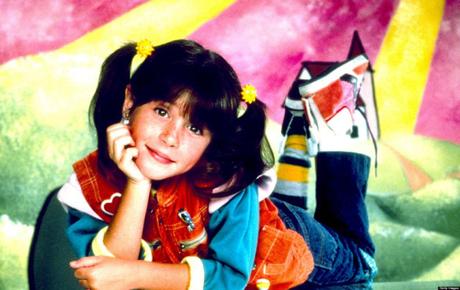Kids living with substitute parents were big on 80s TV. Television would have had us believe you could will your kids to your employer (Diff’rent Strokes), take in homeless teens (Growing Pains), force two guys you slept with to share custody of your kid (My Two Dads), or raise a robot as your daughter (Small Wonder), all without any legal intervention. I don’t know if the networks were just trying to be inclusive of less traditional families or catering to kids who wished they could trade theirs in.

In this climate, Punky Brewster’s premise wasn’t hard to buy, but the show went above and beyond in attempting to be realistic. In making the pilot a three-parter, the network expressed their confidence in the audience’s willingness to stick with it, and the creators acknowledged the complexity of the subject matter. Don’t misunderstand; the show debuted with all the trappings of an 80s sit-com, including a whimsical montage, but it boldly adopted the tone of a “very special” episode right out of the gate.
At a minute and a half long, the opening credits sequence does some heavy lifting in terms of storytelling. We see a little girl with a puppy on a rope leash, begging for food in a grocery store parking lot. We see her happily skipping along the street, unknowingly crossing paths with her foil, middle-aged photographer Henry Warnimont, who blatantly ignores a homeless man.
In case you don’t remember how Punky eventually meets Henry, she’s squatting in an empty apartment in the building he manages. The only person aware of her presence there is a neighbor girl about the same age, Cherie. Cherie envies Punky’s having her “own place” and lack of curfew. “You have something I don’t,” says Punky, “…a family.” That’s a little heavy on the heartstrings for three minutes in.
If you were alive when the show aired, you probably remember the rest from there. Punky’s biological father left, then her mother abandoned her in a mall parking lot. Henry is a widow who has never moved past his wife’s death. He takes her in and hilarity ensues. She’s never without canine sidekick, Brandon.
Watching as an adult, I have so many questions about the dog. Did her mom desert her with the dog? Or did she find it when she was on the street? Has he ever been to the vet? Does Punky have any idea how to train a dog? Isn’t he awfully big to live in an apartment?
If you think those questions strain reality, what are the implications of a single man just taking in an eight-year-old?
We can infer that he simply wants the company when he invites her in for dinner, or that he’s afraid she’ll run before he can contact the proper authorities. “Well Brandon,” she says, “We’ve gotta trust somebody some time.” Not really an attitude you want to cultivate in little girls, but we sort of buy that Punky comes pre-packaged with some worldly wisdom that allows her to read people.
You would think Henry would call the police the minute he meets her, but she falls asleep on his couch and he doesn’t want to wake her. When he finally does make a call, it’s to his “detective friend,” who starts trying to track down Punky’s mom. He then goes on to leave her alone in the apartment all day, which I guess you could get away with back then. Today you can’t let a kid walk down the block alone, but it was a different time. (When you start referring to the era of your childhood as “a different time,” you are officially middle aged.)
Midway through, the pace slows somewhat. Through dialog and tone convince you that Punky’s going to be okay with Henry. Part 1 ends with him resolving to take her to child services the next morning, but we all know she’s going to stay around or there would be no show.
When a social worker arrives, she wants to take Punky to a group home and threatens to call the police on Henry if he won’t let her go. Punky gives in rather than see Henry get arrested. Act 2 is pretty much a throw-away. Punky goes to group home. Punky runs away from group home. We meet a couple of other kids in the system–which feels like a bit of a PSA–but we don’t learn much that isn’t covered in Act 3 anyway.
It’s only in the third part that the writers start delving into the complications of the child welfare system. It’s a somewhat superficial treatment, of course, but satisfactorily complicated to convince us that it could happen. And it makes a couple of points. One is that a girl who’s a bit older, maybe 13, has lost all hope because no one wants older kids. It also treats people working within the system as human rather than as plot devices; the young social worker on Punky’s case is a three-dimensional if idealistic young woman who eventually saves the day.
In the end, a judge awards custody on the condition that Henry undergo the foster parent licensing process and we, as an audience, are rooting for the two them to be together. Could this really happen? I don’t know, but somehow the writers managed it with a delicate touch that allows us to connect with both Punky and Henry. The show went on to run for four adorable seasons.
